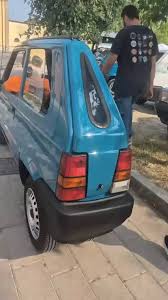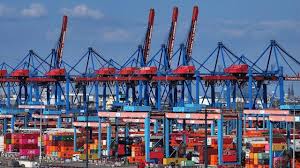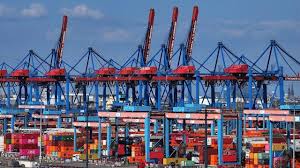In Italy, a bio-waste plant proves a regenerative bioeconomy is possible

Rome: Biobased goods will be an essential part of industrial decarbonisation. Yet there is growing awareness that even renewable feedstock can undermine environmental goals when sourcing is not carefully managed.
The headlong rush towards crop-based biofuels and bioplastics over the last several decades has now provoked a backlash from consumers and industry who have come to recognise the trade-offs of cultivating vast tracts of land for industrial feedstocks. These include biodiversity damage, loss of agricultural land for human consumption, and emissions embedded in fertiliser, and weakening the land’s carbon-absorbing capacity.
One part of the response to indiscriminate biomass use has been the rise of the regenerative bioeconomy, a new paradigm that promotes higher standards on what it means business sustainably.

There is no single blueprint for a regenerative biobased business. Some opt for waste feedstock instead of crops or have innovative revenue generation models that enable ecosystem regeneration. Another criterion of a regenerative business is that it strengthens local economies and communities.
Acqua & Sole, a bio-waste plant in the Lombardy region of northern Italy, embodies many of the principles promoted by the regenerative bioeconomy. Both its technical innovations and strategic relationships with regional actors are helping it minimise its environmental impacts while enhancing the livelihood benefits of the biobased circular economy.
The plant was originally founded by the Natta family, who developed a patented process for transforming the sewage and agro-waste feedstock into useful products. The manufacturing process deployed here is known as thermophilic degradation, which removes bacteria present in the sewage feedstock and reduces odour.
Acqua & Sole’s bio-digester plant fits the regenerative mould insofar as its feedstock is sewage sludge and agricultural bio-waste rather than crops grown for industrial purposes.
Using a feedstock made up of around 85% sewage and 15% organic residue from the agro-food industry, the company produces agricultural soil improver (digestate) for use in surrounding farmland.
The problem with thermophilic digestion is that toxic levels of ammonia can build in the digester. The company solved this by using a nitrogen stripper to remove 40% of the ammonia. This became the company’s second product: an organic liquid nitrogen fertiliser in the form of ammoniacal sulphate.
Hitting another criteria for the regenerative enterprise, the company sells its organic, low-carbon and circular products to local farmers, who make a saving by procuring these sustainable inputs.
It is estimated that farmers who buy from Acqua and Sole make a saving of €2 million because they no longer have to purchase synthetic mineral fertilisers based on potassium, phosphorus, and nitrogen. Organic agricultural chemicals are also much less prone to over-application, cutting the risk they will run off and pollute the surrounding environment.
These farmers are not just consumers of Acqua and Sole’s product – they are vital feedstock suppliers too, delivering waste from their rice and cereal cultivation to the project which the company turns into its own biogas energy. All on-site electricity and heat are covered by its own biogas with any surplus fed into the national grid.
This energy self-sufficiency means Acqua and Sole’s products are helping decarbonise farming. Synthetic nitrogen fertiliser is so energy intensive that it is responsible for 2 percent of global energy consumption per year. Under the Acqua and Sole model, farming residue becomes the energy for creating new soil inputs, keeping waste and emissions to a minimum.
The company is a private enterprise which put up around €30 milllion in initial resource investment, supplemented with just €1.5 million in public subsidies. Yet since its founding, the biowaste business has grown into something bigger, drawing together a patchwork of private and public entities each with different economic incentives for supporting the project.
Acqua and Sole’s circular biorefinery is well embedded in the region’s political and social institutions. The mayors of three surrounding municipalities are stakeholders in Acqua and Sole’s operations as the company contributes to the management of local waste. The fact they draw on large volumes of human sludge and food waste means it is less likely to end up contaminating the environment.
One large private utility provides the sewage feedstock and waste management – an added revenue stream for them – while two large supermarket chains provide the company with the food waste. Five farmers in the local area make up the market for Acquia & Sole’s fertiliser.
This consent and support from local community members and governance bodies hits yets another another criterion of regenerative businesses.
The regenerative bioeconomy concept recognises how important broad-based social support is to expanding biobased production from the small niche it occupies today to a more important position within the economy. When diverse stakeholders develop strong material interests in seeing the firm succeed, scaling and viability comes much more naturally.
Acquia and Sole is certainly giving its farmer customers a reason to support their sustainable manufacturing. Interviews with the farmers report their rice and wheat crops are improving thanks to the company’s organic inputs. Crops show greater resistance to viruses, infections and pathogens. Acqua and Sole’s organic products’ impact on crop and soil health showed the farmers how damaging to long-term crop and soil health more potent fossil-fuel based fertilisers had been.
Acqua and Sole’s shows how boundary-pushing innovations do not always relate to technical advances. Although it has demonstrated the efficacy of their bio-digestate process, another equally important achievement has been in building connections between different industries.
The business delivers on the needs of local farmers seeking to boost revenue while also supporting healthier relationships between agriculture and the surrounding ecology. It is surrounded by abundant feedstock that travels short distances from local farmers.
Acqua and Sole also plays a vital social role in easing political pressures on local authorities to deal with waste in a nature-friendly, cost-efficient manner. By forging supply relationships with supermarket chains, the initiative also meets growing desire to meet sustainability targets among consumer-facing corporations.
In short, the enterprise fits the natural and social landscape that it has found itself in: the agricultural context of Lombardy and the wave of corporate sustainability targets among urban corporations.
This marks a broader lesson for the green transition and one that applies beyond the bioeconomy. There are valid criticisms of how green transition industries have not always delivered on the economic benefits that it has promised to ordinary citizens. This risks slowing the pace and scale of the economic transition by fostering discontent and push-back.
Already, we are seeing in some parts of the developed world a failure to bring diverse groups on board with new economic sectors associated with the green transition. This dissatisfaction provides cannon fodder for political movements intent on protecting the market share of fossil industries. Under this lens, social factors are less a ‘nice-to-have’ than an integral part of building a robust, scaleable circular economy – something we are seeing in action with the Acqua and Sole model.
Much of the focus of the bioeconomy has been on scaling individual firms but Acqua and Sole shows equal attention should be placed on how to weave end-to-end supply and demand relationships between businesses and community groups.
Part of the difficulties in dismantling the fossil-based industries is that there are significant integrations between them. The ties between natural gas and fertiliser industries as well as the oil and industrial chemicals industries are well known. The biobased economy must mimic these networks of interdependence in order to become an essential feature of the industrial landscape.
Acqua and Sole are showing that these intricate networks of dependencies can be built around sustainable industries too. Local and national stakeholders, public and private entities, have formed an interlocking network revolving around a single plant in the north of Italy working with circular, biobased materials.
The success of this model could be replicated elsewhere, particularly in rural environments. Although often overlooked in favour of urban startups, the rural economy is a vital springboard for the regenerative bioeconomy as this is where many potential buyers and suppliers of biobased materials are found in close proximity: towns where waste is concentrated, the political and social impetus to preserve heritage landscapes, and farmers with bio-waste and the incentive to find cheaper inputs and new revenue streams.





